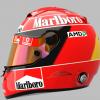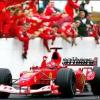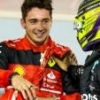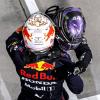from https://x.com/mollym...713281764196641
The 2024 F1 sporting & tech regulations were just updated today with some very interesting changes. From a really cheeky braking system update, Mule Car testing, tyre testing, penalty application, stopping on track during qualifying, and more A THREAD
1) 11.1 Brake Circuits and pressure distribution -Any system or mechanism which can produce systematically or intentionally, asymmetric braking torques for a given axle is forbidden.This would suggest a team has found a way outside of the typical front/rear brake bias shifts - most notably called Brake Magic by Mercedes and a team has been doing something cheeky with their brake maps, or braking controls that allows for improved braking not only front to back but left front, right front, left rear right rear. Which would be HUGE in corner performance.This is cheeky as typically a regulation this explicit isn't rolled out mid season into regulations unless:1) The FIA found, observed, or it was reported by other teams, that a team or all teams were doing this as it is a grey area and consider it not in the spirit of regulations (see: DAS). And the FIA wanted to put a stop to it.
2) This was a complete miss on their end and they're closing a regulatory loop hole - please comply.Note: Id almost anticipate there being a TD on this issued but we don't see those. It could also be such a grey area they went straight to adding it to the regulations as a do not do.Its important to note teams do modulate on the rear side specifically with the diff and how locked/unlocked it is. But to have vectored braking is potentially a huge tool they can also modulate just like the diff to aid in balance and cornering.
2) Mule Car testing (TMC 10.10) TMC is as any track running time using cars in compliance\with current regs or any of the four (4) calendar years falling immediately prior to the calendar year of the Championship but modified for the purpose of providing track testing of future products.
This is a significant addition to the regulations as this allows teams to build cars based on chassis from the current season through last 4 seasons (pre ground effect era) to allow for on track testing( mainly tyres) for the upcoming 2026 regulations as current 2024 regulation cars make it difficult to garner any correlateable data for the 2026 regulation shake up.Mule tests will be really fascinating to watch as the cars will be "minimally modified" for the necessary purpose of testing desired components. Since our last time with true mule testing was 2017 when car size was increasing. However 2026 it is the opposite.
3) Clarification to 54.3 with time penalties now *may* be carried over to the next race as grid penalties. This ones confusing. But I understand it as 5 or 10 sec penalties can now also be carried if the driver is unclassified in the race, or retirements, in addition to pit lane drive throughs or stop-and-go's.
This reads like the closure in a loop hole. As a driver must run 90% race distance to be considered classified last I checked the regulations. and seems to be deterring teams from maybe trying to try something cheeky when handed one of these.
4) The Carlos in China qualifying conundrum. Aka updating 39.6 to now read: Any driver whose car stops on the track in any area other than the Pit Lane during the qualifying session or the sprint qualifying session and receives physical assistance will not be permitted to take any further part in that session.Basically, if your car stops on track and you're able to get it going again on your own accord, you would be fine. The previous regulation which read any drivers car stops on track in any area other than the pit lane during the session they will not be allowed to continue, is what led to Aston Martin protesting these results
This is a step in the right direction as its a direct lesson learned from Aston Martin's protest of qualifying results. However I have my reservations, as a situation like this would create a red flag or local yellow conditions- in which there is no penalty for causing in F1 during qualifying. Without a rule similar to that of IndyCar where a driver who causes a red flag during qualifying loses their two fastest lap, or causes a yellow flag loses one of their fastest lap times drivers can continue without consequence.
A 3rd reason this could have been put in which I totally forgot about, is that a team asked about it. Teams do not operate in a vacuum when it comes to developing cars and things they want to bring to the track. Which is also a potential reason why this was added to the regulations. A team said “hey, FIA, we are developing this, we want to bring it to the track” and the FIA very well could have **** it down that way as well.
Checked here(https://www.fia.com/...on/category/110) for the changes and indeed 11.1 Brake circuits and pressure distribution is indeed updated.
edit: screenshot added:

Edited by jonklug, 01 August 2024 - 08:24.

































